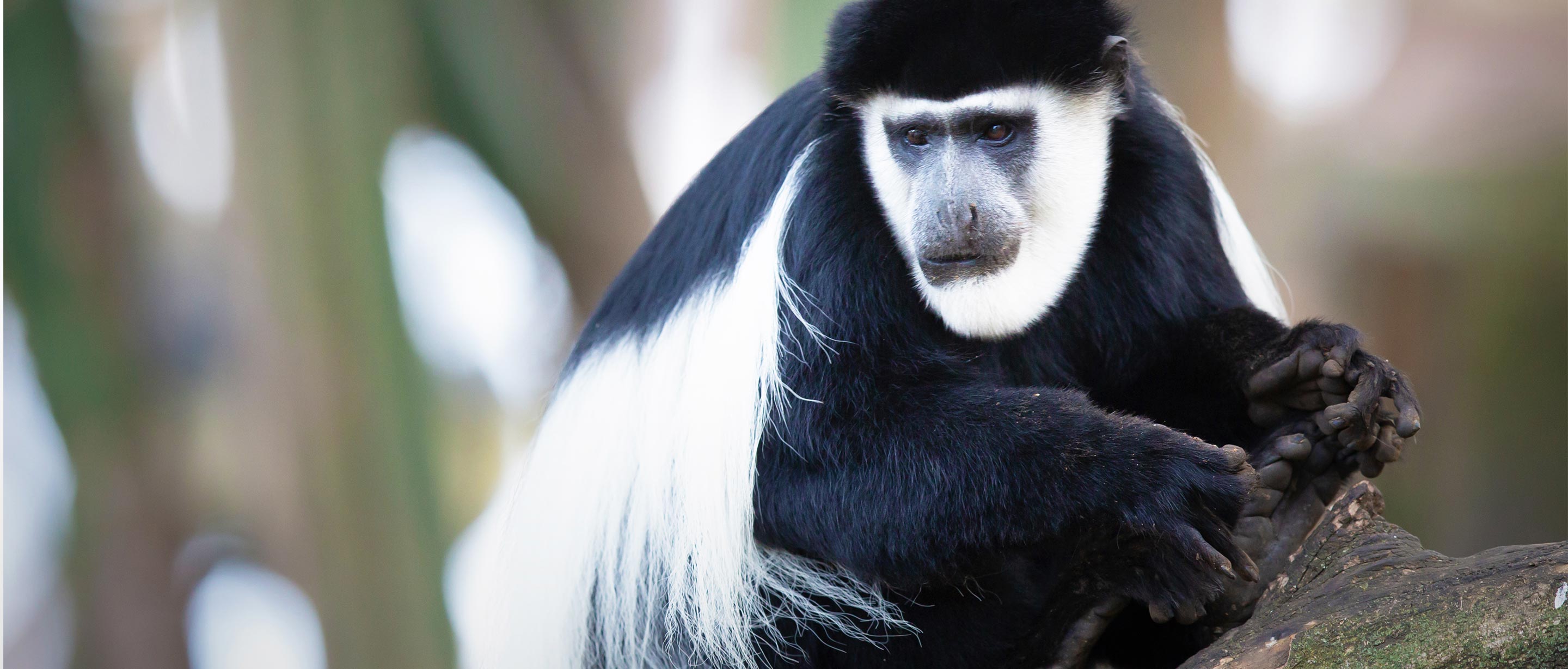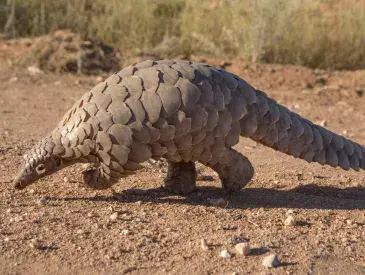What is the colobus monkey?
The name “colobus” is derived from the Greek word for “mutilated,” because unlike other monkeys, colobus monkeys do not have thumbs. Their beautiful black fur strongly contrasts with the long white mantle, whiskers, bushy tail, and beard around the face. The Eastern black-and-white is distinguishable by a U-shaped cape of white hair running from the shoulders to lower back, whereas the Angolan black-and-white has white hairs flaring out only at the shoulders.
Angolan black-and-white colobus (Colobus angolensis) <br /> Eastern black-and-white colobus (Colobus guereza)
4 to 14 kilograms (11 to 30 pounds)
Up to approx. 75 centimeters long (30 inches)
A high reported of 20 years in the wild
Lowland, montane forests, and gallery forests
Herbivorous
4 to 6 months
Leopards, large eagles, chimpanzees, humans
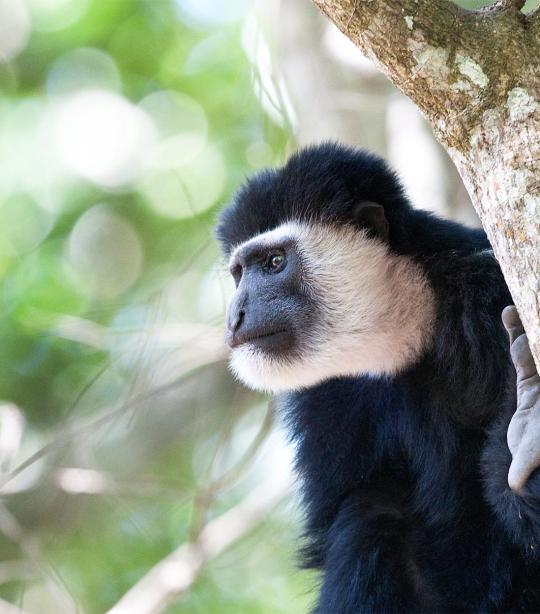
Challenges
Hunting led to the colobus’s extermination in some areas.
At one time this species was hunted excessively for its beautiful fur. Its skin has been used to make dance costumes, hats, and capes.
The biggest threat to the colobus today is habitat loss.
As human populations are growing and expanding, forests are cut down to make room for agriculture, settlements, and roads. They are rapidly losing their homes as unsustainable development progress.
Solutions
Our solutions to protecting the colobus monkey:
African Wildlife Foundation’s scientists use technology — like Geographic Information System (GIS) — to identify key threats to conservation and pinpoint areas that have the most potential for wildlife. Once scientists have identified these areas, we can work with communities and governments to set them aside for wildlife.
AWF works with pastoralist people to develop appropriate sustainable solutions for agricultural and settlement growth by providing training on best practices and incentivizing conservation when appropriate, like in the Congo where we provided pastoralists with increased seed varieties and new planting techniques. This allows for maximized productivity and less wasted land, leading to increased food and economic security for people and more space for this monkey.
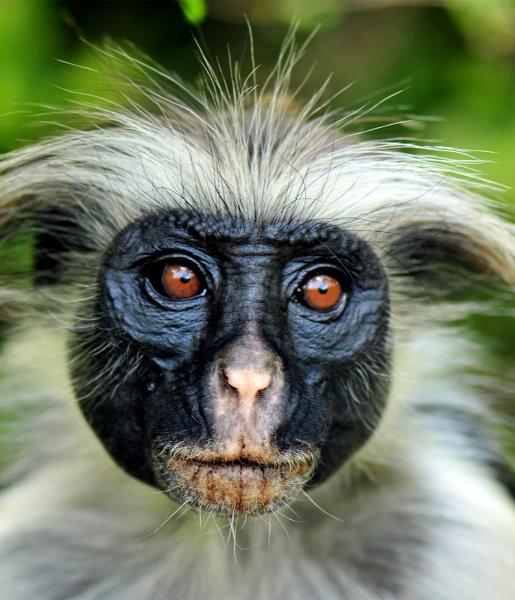
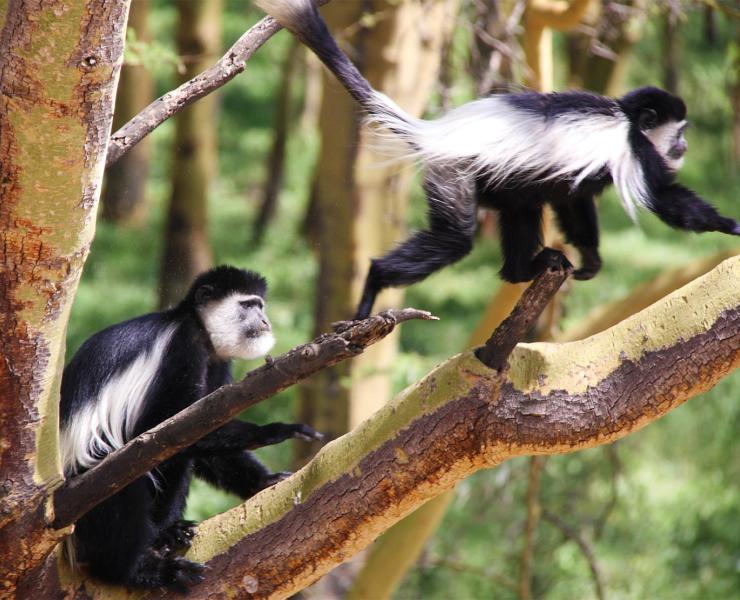
Behaviors
The colobus is the most arboreal of all African monkeys.
These monkeys rarely descend to the ground. They use branches as trampolines, jumping up and down on them to get liftoff for leaps of up to 15 meters (50 feet). They leap up and then drop downward, falling with outstretched arms and legs to grab the next branch. Their mantle hair and tails are believed to act as a parachute during these long leaps. They are a highly arboreal species; however, when the trees are not as dense, they will descend to the ground to hunt and feed.
They live in territorial troops.
They live in troops of about five to ten animals — a dominant male, several females, and their young. Some groups will temporarily have multiple males, but they leave once they have matured. The females, however, remain with their birth group for their entire life. Each troop has a well-defined territory, which is defended from other groups. Adult troop members, especially males, make croaking roars that can be heard resonating throughout the forest. Despite their territorial nature, fighting over mates rarely occurs but there is a high infanticide rate when a male leadership role is replaced or taken over.
Members of the troop care for the infants.
There is no distinct breeding season, although most mating probably occurs during the rainy season. A female will give birth once every 20 months, on average. Newborns have a pink face and are covered with white fur. At about one month they gradually begin to change color, finally gaining the black and white adult coloration at about three months. Infants are carried on their mother’s abdomen, where they cling to her fur. As they mature, they spend a lot of time playing with their mother and certain other adults. In the first month when the infant still has a pink face, they are handled three to five times an hour in resting groups. However, the infant mortality rate is high even though the young are carefully tended to. Once the young reach seven months, they begin playing with juveniles. The games they play exercise their bodies, and as they get older, these develop into wrestling matches and mock displays.
Diet
Colobus monkeys are capable of eating toxic foliage.
They are strictly leaf-eaters and spend most of their time in treetops, preferring to eat the tender young leaves found there. However, their complex stomachs enable them to digest mature or toxic foliage that other monkeys cannot.
Habitats
Where do colobus monkeys live?
The two species of black and white colobus monkeys are found in Kenya, those that inhabit coastal forests and those in inland high-country areas. Red colobus monkeys are also found in East Africa, but are endangered and quite rare. Two other types of colobus monkeys in Africa are the black and the olive. These monkeys live in all types of closed forests, including montane and gallery forests. Bamboo stands are also popular dwelling spots for this species.
